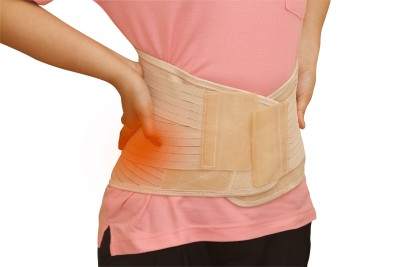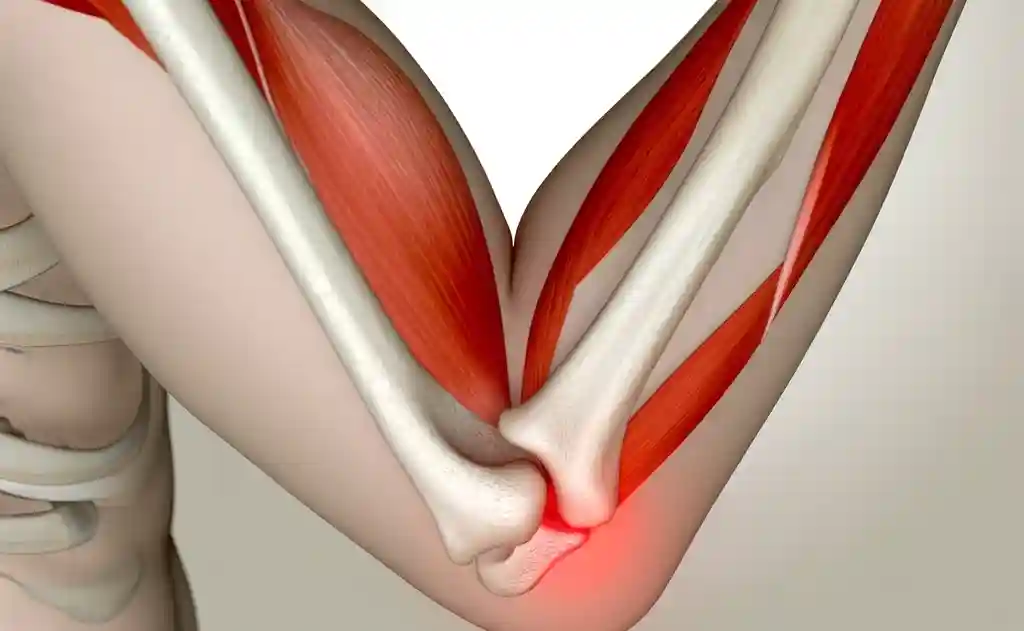Back Support Belt for Safety and Stability: A Comprehensive Guide

Thinking about purchasing a back support belt to alleviate your lower back pain? Curious about the best times to wear such a support? This guide is crafted to enlighten you on the essential criteria for selecting and utilizing a back support belt effectively.
Back Support Belts Provide Stability and Bracing
Back support belts, often referred to as back belts or lumbar supports, are essential for some and detrimental for other individuals with back injuries or jobs that involve heavy lifting. These supports act like an external brace, providing stability and safety to your back by mimicking the support system your body naturally has.
See Also: Best Treatments Help Your Lumbar Disc Herniation
Your Body’s Natural Back Support:
Imagine your body’s natural back support as an inbuilt corset. This “corset” is composed of your abdominal muscles, which connect to your lower back fascia and muscles, encircling your waist entirely. This natural mechanism is your first line of defence against back injuries, and understanding its role is crucial before considering additional support.
Should You Wear a Back Support Belt?
Before diving into the world of back support belts, ask yourself the following questions:
- Have you ever experienced lower back injury or pain?
- No: If you’ve never suffered from back pain, wearing a back support might not be for you. Research indicates that for individuals without prior back pain, back supports offer no benefits and could potentially weaken your muscles over time, increasing dependency on the belt and risk of injury when not worn.
- Yes: If you’ve had back pain, proceed to the next question.
- Have you been injured while wearing a back support?
- No: It’s time to focus on strengthening your core. A robust core is essential for back health and can often eliminate the need for lower back support.
- Yes: Continue wearing your back support but also commit to specific exercises designed to build your core strength and gradually reduce reliance on the belt.
See Also: Why Is Disc Surgery Success Only 50%
Strengthening Your Core: The Alternative to Back Support Belts
Instead of immediately opting for a lumbar back support belt, consider strengthening your core muscles. A strong core supports your lower back naturally, reducing or eliminating the need for artificial supports. Engaging in targeted exercises can fortify your abdominal and back muscles, providing a natural “corset” that offers protection and stability.
For those who have already experienced back pain or injury, wearing a back support can be a temporary measure while you work on building your core strength. Transitioning away from the support should be a gradual process, aiming for 2-3 months with consistent exercise.
Remember, back supports are not a one-size-fits-all solution. Their effectiveness and necessity vary from person to person, depending on individual health history and lifestyle. Before making a decision, consider your own needs, consult healthcare professionals, and weigh the benefits of natural strength versus external support.
Problems With Back Support Belts
The use of back supports and belts is a common practice among individuals seeking relief from back pain or looking to prevent back injuries, especially in occupations that require heavy lifting. However, it’s crucial to be aware of the potential drawbacks and problems associated with their long-term use. Here’s a closer look at some concerns surrounding back supports:
1. Increased Abdominal and Blood Pressure
Back supports can elevate abdominal pressure, which in turn may raise blood pressure. This poses a significant concern for individuals with high blood pressure, as the increased pressure could heighten the risk of cardiovascular events, such as heart attacks and strokes.
2. Risk of Varicose Veins and Hemorrhoids
There have been reports linking the use of back supports in the workplace to the development of varicose veins, specifically in the testicles, and haemorrhoids. Though not conclusively proven, the association between prolonged use of back supports and these conditions cannot be entirely dismissed and warrants caution.
3. Questionable Efficacy in Preventing Back Injuries
Research conducted by the National Institute For Occupational Safety and Health (NIOSH) in 1994 and 2000 found that back supports did not significantly reduce the incidence of back pain or back injury claims. This challenges the effectiveness of back supports in preventing back injuries, a primary reason many individuals and employers invest in them.
4. Potential for Increased Injury Risk Upon Discontinuation
Studies, including one by Reddel in 1982, indicate that discontinuing the use of back supports after prolonged use could lead to an increased risk of lower back injuries. This suggests that reliance on back supports might weaken the natural support system of the back muscles over time, making them more susceptible to injuries.
5. False Sense of Security
Back supports may give users the impression that they can lift more weight than they safely should. This false sense of security can lead to overexertion and a higher risk of injury, as individuals may lift heavier loads or do so more frequently than advisable.
6. Misconceptions About Spinal Pressure
Contrary to some claims, increased abdominal pressure from wearing back supports does not decrease pressure on the spine. It can increase pressure on the lumbar spine, contradicting the claims made by some manufacturers that back support belts lessen spinal load.
In light of these concerns, it’s important to approach the use of back support belts with caution. While they can offer benefits in specific situations, relying solely on back support belts for back health is not advisable. Integrating core strengthening exercises, practising proper lifting techniques, and considering ergonomic solutions are critical steps for maintaining back health and preventing injuries without becoming dependent on external supports.
Solution: Back Support Belt
#1 Lift Properly Using Proper Lifting Technique
Wearing a support belt will not prevent you from getting lower back pain if you are lifting in the wrong way. Proper lifting technique is essential to preventing injury to your back. Otherwise, you might end up coming to our downtown Toronto chiropractic clinic. Here’s how you prevent this.
Proper lifting with your butt called Butt Lifting is shown in the link just below.
See: Lifting Techniques: Weight Lifters vs Chiropractors’ Back Safety Lifting Technique
#2 Use Back Support Belts Only For The Heavy Stuff.
Back Supports and belts should be used sparingly. Remember using back support all the time weakens your lower back and abs making you vulnerable to big injuries once you stop using your back support.
Elliott Hulse uses his weight belt for only the heavy stuff when he is giving it his all. Weight lifting with a weight belt is different from wearing a back support to prevent your lower back from hurting, but in this case, Elliott Hulse’s principle is sound to use with your lower back support.
In other words, use your back support when you have to lift beyond what you normally lift or when you have to lift repetitively.
Four Basic Exercises You Need When Weaning From A Back Support or Belt
#1 The Front Plank
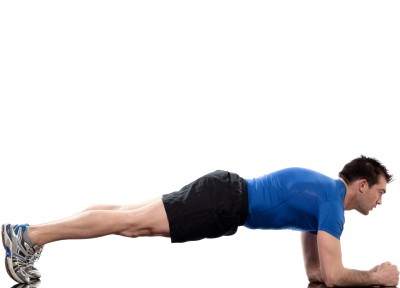
- To start keep your feet together and place your arms shoulder-width apart.
- Go up on your elbows with your head facing down to keep a straight line
- Don’t let your butt go too high or low. The picture above shows a straight line from his legs to his spine, which is the proper technique.
- Hold for 3 sets of 10 seconds. Work your way up to one minute. If you want to make it harder just raise one leg as high as it will go.
#2 The Supine Bridge
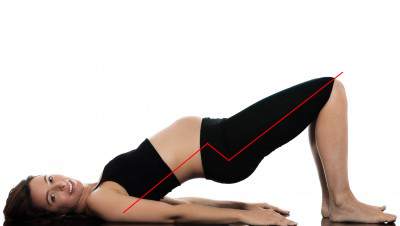
- Keep your feet shoulder-width apart and your hands on the floor with your palms down
- Look straight up, don’t look sideways like in the picture
- Raise your buttock off the floor keeping your spine and legs in alignment. In this picture, her buttocks have come down due to a weak core. Good form is important. Look in the mirror when doing the exercises.
- Endurance is most important not strength. Lower your buttock until it touches the floor then go back up again.
- 3 sets 10 times. Your butt should touch the floor each time.
#3 Lunges
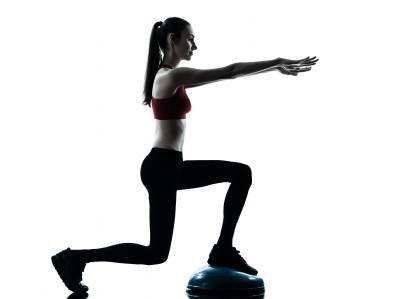
- The picture above shows an advanced lunge on a Bosu Ball. The Bosu Ball can always be added later.
- Take a big step forward with one foot and let the other knee almost touch the ground.
- To make it easy at the beginning you can bring your knee down only half way.
- Remember to keep the arch in your back called a lordosis.
- 3 sets of 10 for each leg.
#4 Bird Dog
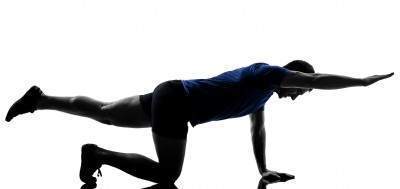
- Get into a push-up position with your hands and feet shoulder-width apart.
- Harden your core by contracting your abs and lower back. This is called bracing.
- Lift up your arm first. If this is easy lift your leg only. If that is easy lift opposite legs and arms e.g. left leg, right arm
- Want to make it tougher. Try lifting an arm and leg on the same side.
- 3 sets of 10. If you are shaking a little or cannot balance quite right you’re doing the right exercise for you i.e. lifting just the leg or arm might be easy but lifting opposite arms and legs might put you off balance a bit. Make sure you are stable before going to the advanced bird dog.
Will you be wearing a lower back support or belt?
Tell us what you think in the comments below and like us on Facebook. This Toronto Downtown Chiropractor will answer all questions in the comments section.
